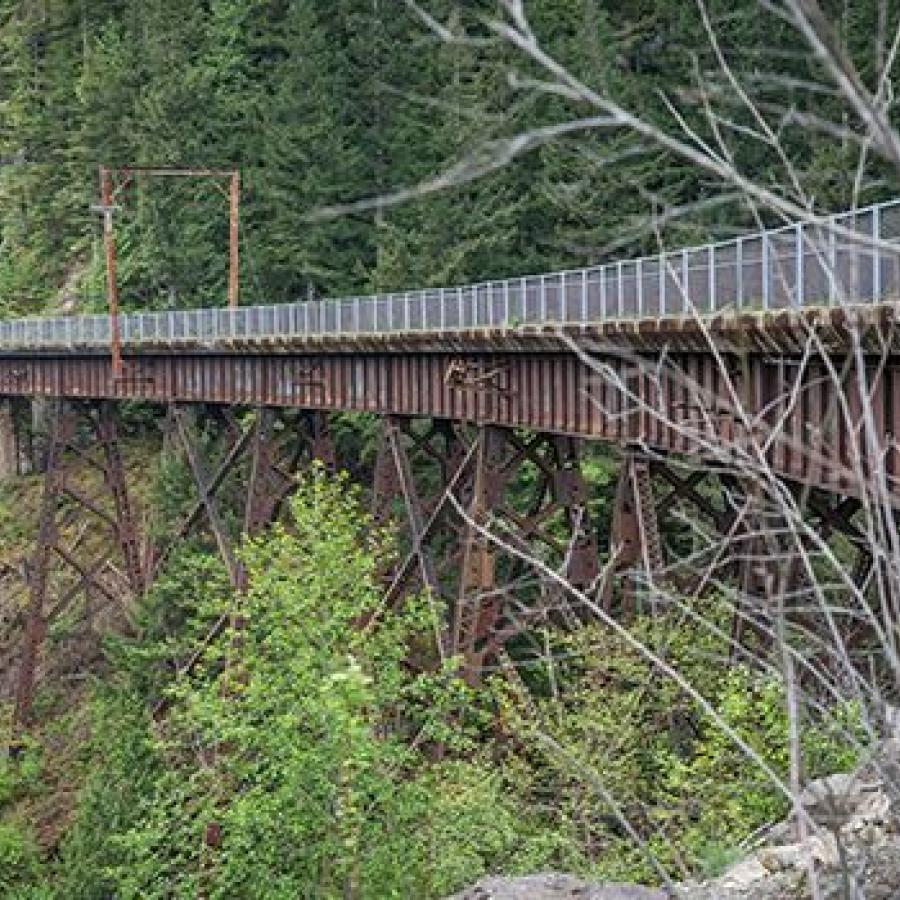
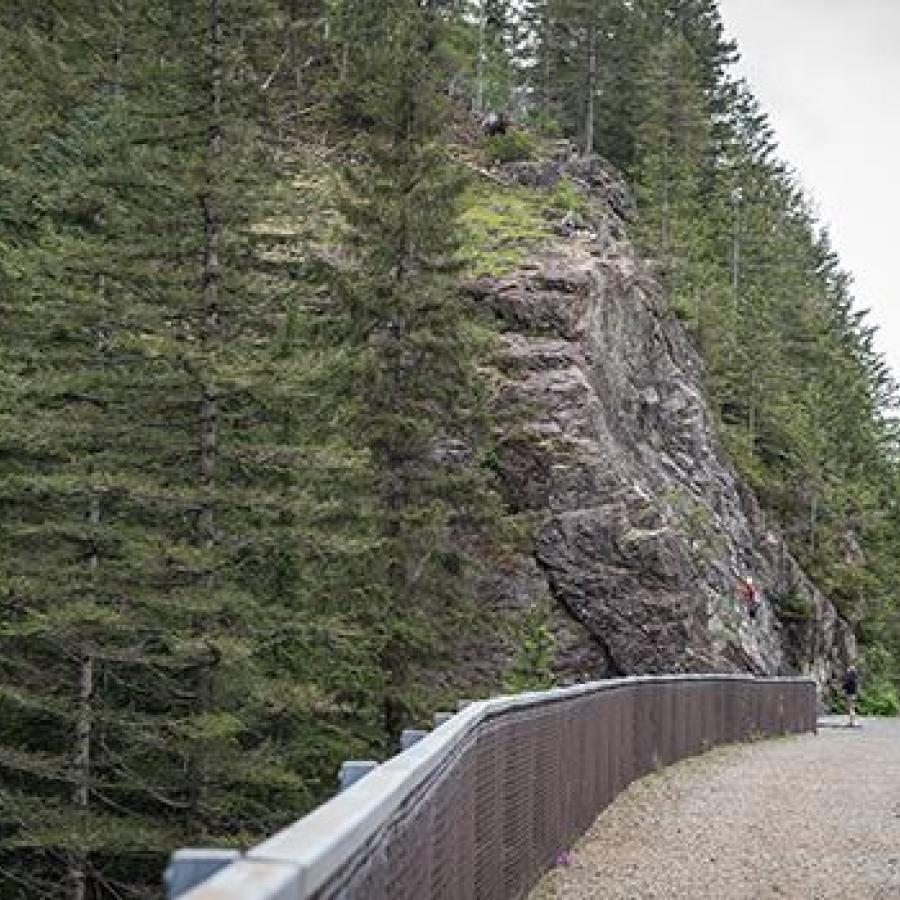
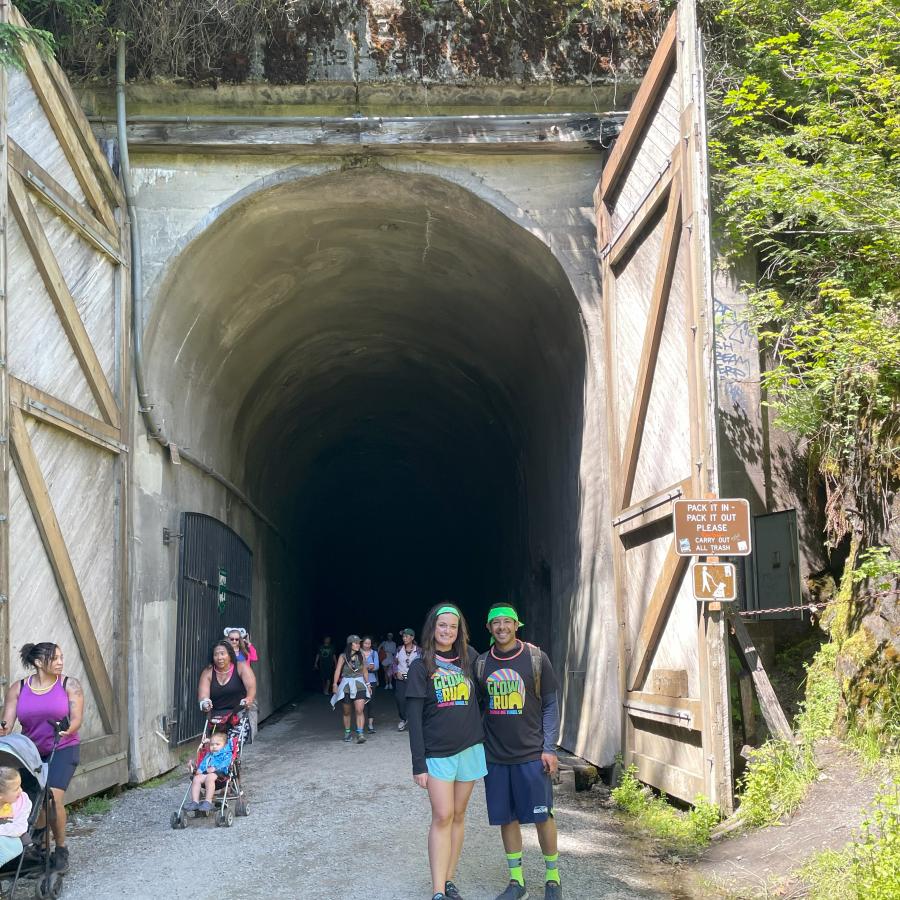
No fires permitted at any time.
The Snoqualmie Tunnel will be opening May 1st for the 2025 season.

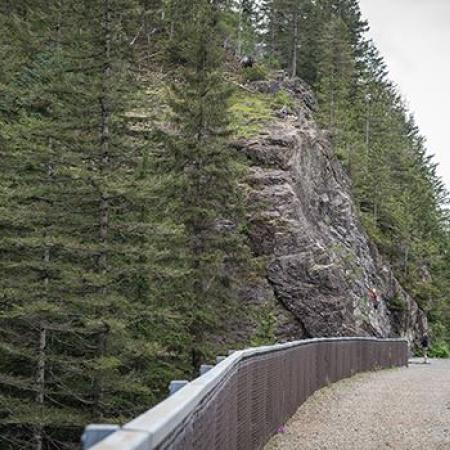
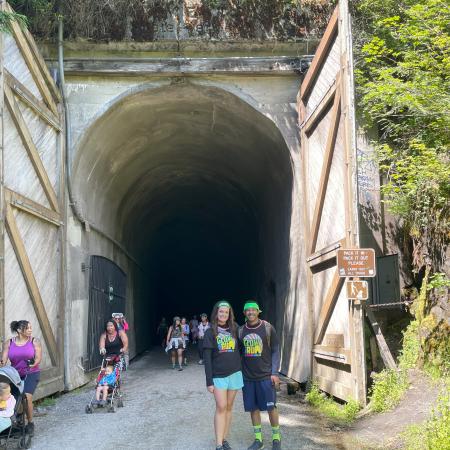
North Bend area to Snoqualmie Pass Tunnel, 18 miles
The West section of the PTCT is also the most improved for recreational use. This section starts in King County at the Cedar Falls Trailhead (milepost 2136) and continues east to the 2.3-mile-long Snoqualmie Tunnel (milepost 2117).
No motorized vehicles are allowed on the trail.
All climbing routes on Deception Wall (I-90 Exit 38) are temporarily closed due to Peregrine Falcons nesting in the area. The approximate date for reopening is July 15. You may still climb routes at Substation, Write-Off Rock, Nevermind Wall, We Did Rock, and Hull Creek Rock.
Learn about seasonal closures and operational changes during the off-season on the Winter Schedule page.
The Snoqualmie Tunnel at Hyak closes seasonally for the winter. It tentatively closes at the end of October and reopens in May. Please check alerts for its status before heading out.
Biking
Bird Watching
Camping
Fishing
Hiking, Walking, Rolling and Running
Horseback Riding
Rock Climbing
Restrooms
Picnic Tables
Accessible Parking
Parking
Accessible Trails
Bike Trails
Equestrian Trails
Hiking Trails
Creek
Forest
Freshwater
Lake
Meadow
Mountain View
River
Seasonal Wildflowers
Waterfall
Wetland
Wildlife Viewing
No motorized vehicles are allowed on the trail.
All climbing routes on Deception Wall (I-90 Exit 38) are temporarily closed due to Peregrine Falcons nesting in the area. The approximate date for reopening is July 15. You may still climb routes at Substation, Write-Off Rock, Nevermind Wall, We Did Rock, and Hull Creek Rock.
Learn about seasonal closures and operational changes during the off-season on the Winter Schedule page.
The Snoqualmie Tunnel at Hyak closes seasonally for the winter. It tentatively closes at the end of October and reopens in May. Please check alerts for its status before heading out.
The Palouse to Cascades State Park Trail is not a fully improved, continuous "cross state" trail. Several sections are closed to public access due to safety concerns, active rail use and private property. Exploring the PTCT requires informed planning and preparedness and, in the eastern section, pre-registration. Please familiarize yourself with the trail before visiting.
Click here to visit the Palouse to Cascades State Park Trail Visitor Information Map for more information about surface condition, trail ownership gaps and closed bridges.
We are actively working to improve and adapt the PTCT for recreational use, which makes it a dynamic state park with ongoing projects that that could temporarily impact access.
This section of the trail features several creek crossings with renovated trail trestles and bridges, including Boxley Creek Bridge, Hall Creek Bridge, Change Creek Trestle and Hansen Creek Trestle. Many of the trestles are worth a trip just to see the stunning views they offer.
This section also includes Deception Wall, part of the popular “Exit 38” climbing area, which has a number of technical rock-climbing routes where passersby can watch climbers defy gravity.
Closer to the Snoqualmie Tunnel, you’ll find a series of historic avalanche sheds built to protect trains from frequent avalanches along this section of the trail. In the Fall, fire-red leaves of the vine maple (Acer circinatum) create a colorful showcase of nature.
Primitive campsites are available first-come, first-served at Alice Creek (milepost 2127.1) and Carter Creek (milepost 2123.2). Each campground has three to four campsites, one picnic table, and one vault toilet. You can only access the campgrounds on foot or bicycle.
Explore gentle to moderate trails that offer stunning views, summer wildflowers and majestic waterfalls.
Rattlesnake Ledge is a moderate 4-mile roundtrip trail that takes you up to a rock outcropping overlooking Rattlesnake Lake with great views of Mounts Si and Washington.
Cedar Falls and Twin Falls are shorter, easier trails that are perfect for families with little kids.
Travel along the Snoqualmie Valley Trail, a 32-mile old railroad grade from North Bend to Duvall, with plenty of pretty wildflowers to see and berry picking opportunities.
Get a great workout hiking the steep 9-mile McClellan Butte trail that rewards you with views of I-90 peaks, Snoqualmie Pass and the Alpine Lakes Wilderness at the top.
Annette Lake is a moderate 7.5-mile trail that lets you experience a little of everything: forests, mountain views, wildflowers, waterfalls and a pristine alpine lake.
Experience the thrill of outdoor climbing off I-90 at Exit 38, a popular climbing area with a variety of climbing routes. Whether you are a beginner or expert climber or somewhere in between, you are sure to find a satisfying challenge here.
Deception Crags, Far Side and Mount Washington are three subareas offering nearly 400 climbing routes including sport, trad and top rope graded 5.5 to 5.13b.
Deception Glade and Far Side boulders are subareas with over 130 bouldering routes graded V1 to V9.
Rock climbing involves inherent risks, and climbers are responsible for their own safety and the safety of others.